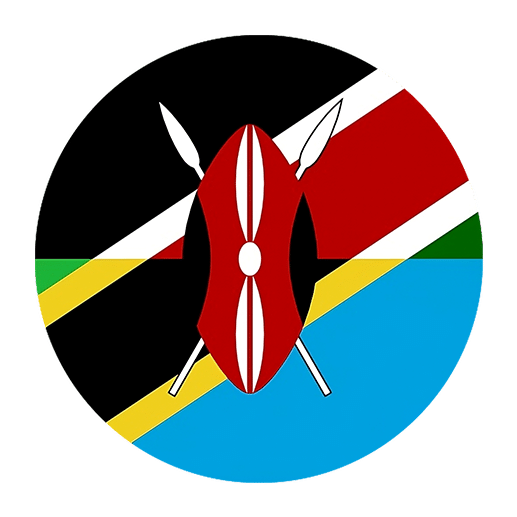Swahili, also known as Kiswahili, is a Bantu language spoken by millions of people across East Africa. It serves as a lingua franca in countries such as Kenya, Tanzania, Uganda, the Democratic Republic of Congo, and Mozambique. Given its widespread use, it’s not surprising that Swahili has developed various dialects over time. These dialects reflect the rich cultural, historical, and geographical diversity of the regions in which Swahili is spoken. For language learners, understanding these dialects can provide deeper insights into the nuances of the language and enhance communication skills.
Major Swahili Dialects
Swahili has numerous dialects, but the major ones can be broadly categorized into three groups: Coastal dialects, Interior dialects, and Island dialects. Each group has its own unique characteristics influenced by historical interactions, trade, and local languages.
Coastal Dialects
The Coastal dialects of Swahili are spoken along the East African coast, from southern Somalia to northern Mozambique. These dialects are considered the “purest” forms of Swahili, as they have been less influenced by other languages.
Kiunguja (Zanzibar Swahili): This dialect is spoken on the islands of Zanzibar and Pemba in Tanzania. Kiunguja is often considered the standard form of Swahili and has greatly influenced the Swahili used in literature and education. Its vocabulary is rich and diverse, incorporating words from Arabic, Persian, Portuguese, and English due to historical trade and colonization.
Kimvita (Mombasa Swahili): Spoken in the coastal city of Mombasa, Kenya, Kimvita is another prominent dialect. It shares many similarities with Kiunguja but has distinct phonological and lexical differences. For instance, Kimvita tends to use the “ch” sound where Kiunguja would use “sh.”
Kipemba: This dialect is spoken on the island of Pemba and has some unique features compared to Kiunguja. The differences are subtle but noticeable to native speakers, particularly in terms of pronunciation and certain vocabulary items.
Interior Dialects
As Swahili spread inland, it blended with local languages, resulting in various interior dialects. These dialects often reflect the linguistic and cultural diversity of the regions where they are spoken.
Kigiryama: Spoken by the Giriama people of Kenya, this dialect has a significant influence from the Mijikenda languages. Kigiryama incorporates many local words and phrases, making it distinct from the Coastal dialects.
Kipemba: This dialect is spoken on the island of Pemba and has some unique features compared to Kiunguja. The differences are subtle but noticeable to native speakers, particularly in terms of pronunciation and certain vocabulary items.
Kimrima: Spoken in the southern coastal region of Tanzania, Kimrima has influences from the local Matumbi and Ndengereko languages. This dialect has a more melodic intonation compared to other Swahili dialects.
Kiunguja: This dialect is spoken on the islands of Zanzibar and Pemba in Tanzania. Kiunguja is often considered the standard form of Swahili and has greatly influenced the Swahili used in literature and education. Its vocabulary is rich and diverse, incorporating words from Arabic, Persian, Portuguese, and English due to historical trade and colonization.
Island Dialects
Swahili is also spoken on various islands off the coast of East Africa, and these island dialects have unique characteristics influenced by their geographical isolation and interactions with other cultures.
Kimakunduchi: Spoken on the southern part of Zanzibar island, Kimakunduchi is distinct from Kiunguja. It has a unique phonology and vocabulary, influenced by the local Makunduchi people.
Kiamu (Lamu Swahili): This dialect is spoken on the island of Lamu, Kenya. Kiamu has a significant influence from Arabic due to the historical presence of Arab traders. It also has a unique intonation and pronunciation, making it distinct from other Swahili dialects.
Kingwana: Spoken in the eastern Democratic Republic of Congo, Kingwana is influenced by local Bantu languages. It has a simplified grammar and vocabulary compared to Coastal Swahili, reflecting the linguistic diversity of the region.
Key Differences Among Swahili Dialects
While Swahili dialects share a common grammatical structure and core vocabulary, there are several key differences that distinguish them from one another. These differences can be broadly categorized into phonological, lexical, and syntactical variations.
Phonological Differences
Phonology refers to the sound system of a language, including its pronunciation and intonation patterns. Swahili dialects exhibit several phonological differences:
Pronunciation: One of the most noticeable differences among Swahili dialects is pronunciation. For example, the Coastal dialects, such as Kiunguja and Kimvita, tend to use the “sh” sound, whereas the interior dialects, like Kigiryama, may use the “ch” sound. Additionally, the Island dialects, such as Kiamu, have unique intonation patterns that distinguish them from mainland dialects.
Vowel Length: Some Swahili dialects distinguish between short and long vowels, while others do not. For instance, in Kimrima, vowel length can change the meaning of a word, whereas in standard Swahili, vowel length is less significant.
Tone: While Swahili is generally considered a non-tonal language, some dialects, such as Kimrima, exhibit tonal variations. These tonal differences can affect the meaning of words and add a melodic quality to the speech.
Lexical Differences
Lexical differences refer to variations in vocabulary between dialects. Swahili dialects have distinct sets of words and phrases, influenced by historical interactions and local languages.
Loanwords: Swahili has borrowed words from various languages, including Arabic, Persian, Portuguese, and English. The extent of these borrowings varies between dialects. For example, Kiamu has a significant number of Arabic loanwords, reflecting the historical presence of Arab traders in Lamu. In contrast, interior dialects like Kingwana have more borrowings from local Bantu languages.
Regional Vocabulary: Each Swahili dialect has its own set of regional vocabulary. For instance, the word for “cat” in standard Swahili is “paka,” but in Kigiryama, it is “kiti.” Similarly, the word for “house” in standard Swahili is “nyumba,” but in Kimrima, it is “nyumba” with a different pronunciation.
Idiomatic Expressions: Idiomatic expressions often vary between dialects. These expressions reflect the cultural and historical context of the region. For example, an idiomatic expression in Kiunguja might not have the same meaning or relevance in Kiamu or Kigiryama.
Syntactical Differences
Syntax refers to the arrangement of words and phrases to create sentences. Swahili dialects exhibit some syntactical variations:
Sentence Structure: While the basic sentence structure of Swahili is subject-verb-object (SVO), some dialects may exhibit variations in word order. For instance, in Kimakunduchi, the object may precede the verb in certain contexts, reflecting the influence of local languages.
Verb Conjugation: Swahili verbs are conjugated based on tense, aspect, mood, and subject. While the basic conjugation rules are consistent across dialects, there are some variations. For example, the verb “to eat” in standard Swahili is “kula,” but in Kingwana, it may be conjugated differently to reflect local linguistic influences.
Use of Particles: Swahili uses various particles to indicate tense, aspect, and mood. The use and placement of these particles can vary between dialects. For example, the future tense marker “ta” in standard Swahili may be replaced with “to” in certain interior dialects.
Similarities Among Swahili Dialects
Despite the differences, Swahili dialects share many similarities that bind them together as a single language. These similarities include grammatical structure, core vocabulary, and cultural expressions.
Grammatical Structure
All Swahili dialects share a common grammatical structure, which makes it easier for speakers of one dialect to understand and learn another. This shared structure includes:
Noun Classes: Swahili nouns are categorized into classes based on their prefixes. These noun classes determine the agreement of adjectives, verbs, and other grammatical elements. The noun class system is consistent across all Swahili dialects.
Verb Conjugation: Swahili verbs are conjugated based on tense, aspect, mood, and subject. The basic rules for verb conjugation are the same across all dialects, although there may be some variations in specific forms.
Sentence Structure: The basic sentence structure of Swahili is subject-verb-object (SVO). This structure is consistent across all dialects, providing a common foundation for communication.
Core Vocabulary
While there are regional variations in vocabulary, all Swahili dialects share a core set of words and phrases. These core vocabulary items include:
Basic Verbs: Common verbs such as “to be” (kuwa), “to have” (kuwa na), “to go” (kwenda), and “to come” (kuja) are consistent across all dialects.
Numbers: The Swahili number system is the same across all dialects, making it easy to count and perform basic arithmetic in any dialect.
Common Nouns: Basic nouns such as “house” (nyumba), “food” (chakula), “water” (maji), and “people” (watu) are shared across all dialects.
Cultural Expressions
Swahili is deeply rooted in the culture and traditions of East Africa. Many cultural expressions and practices are shared across Swahili-speaking communities, providing a sense of unity and identity.
Greetings: Swahili greetings are an important part of daily life and social interactions. Common greetings such as “Jambo” (Hello), “Habari” (How are you?), and “Asante” (Thank you) are used across all dialects.
Proverbs: Swahili proverbs, known as methali, are an integral part of the language and culture. These proverbs convey wisdom and life lessons and are shared across Swahili-speaking communities. For example, the proverb “Haraka haraka haina baraka” (Haste makes waste) is understood and used in all dialects.
Traditional Songs and Stories: Swahili oral traditions, including songs (nyimbo) and stories (hadithi), are passed down through generations. These traditions are shared across dialects and reflect the rich cultural heritage of Swahili-speaking communities.
Tips for Learning Swahili Dialects
For language learners, understanding and navigating Swahili dialects can be both challenging and rewarding. Here are some tips to help you learn and appreciate the diversity of Swahili dialects:
Start with Standard Swahili
Begin your language learning journey with standard Swahili, also known as Kiswahili Sanifu. Standard Swahili provides a solid foundation in grammar, vocabulary, and pronunciation, making it easier to transition to other dialects.
Immerse Yourself in the Culture
Language and culture are deeply intertwined. Immerse yourself in the culture of Swahili-speaking communities by participating in cultural events, listening to traditional music, and engaging with native speakers. This cultural immersion will enhance your understanding and appreciation of the language.
Practice with Native Speakers
Practice speaking with native speakers of different Swahili dialects. Engaging in conversations with native speakers will help you develop a better ear for pronunciation, intonation, and regional vocabulary. It will also give you the opportunity to learn idiomatic expressions and cultural nuances.
Use Language Learning Resources
Take advantage of language learning resources such as textbooks, online courses, and language apps. Many of these resources offer lessons in different Swahili dialects, allowing you to compare and contrast them. Additionally, watch Swahili movies, listen to Swahili radio stations, and read Swahili literature to expose yourself to various dialects.
Be Patient and Persistent
Learning a new language, especially one with multiple dialects, requires patience and persistence. Don’t be discouraged by the differences between dialects. Embrace the diversity and view it as an opportunity to deepen your understanding of Swahili and the cultures that speak it.
Conclusion
Exploring Swahili dialects offers a fascinating journey into the linguistic and cultural diversity of East Africa. While there are differences in pronunciation, vocabulary, and syntax, all Swahili dialects share a common grammatical structure and core vocabulary. By understanding these differences and similarities, language learners can gain a deeper appreciation for Swahili and enhance their communication skills. Whether you start with standard Swahili or dive into a specific dialect, the key is to immerse yourself in the language and culture, practice with native speakers, and stay patient and persistent in your learning journey.

